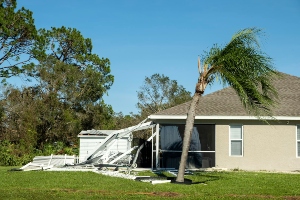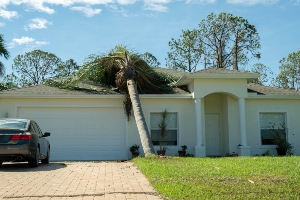Have you ever stepped into a flooded basement after a heavy rainstorm? It's not a pleasant experience. Consider the sump pump benefits. A sump pump is a device that sits in a pit below your basement floor and pumps water away from your home before it can cause damage.
Most homeowners need a sump pump if they live in areas with high water tables, experience frequent heavy rainfall, or have basements prone to flooding.
We often hear from homeowners who wonder if a sump pump is really necessary. The answer depends on your specific situation. Sump pumps protect your home by relieving hydrostatic pressure and preventing water from damaging your foundation, which can lead to costly repairs. They also help keep basement living spaces dry, comfortable, and free from mold and mildew.
Installing a sump pump is a smart investment compared to the potential cost of water damage repair, which can range from $1,500 to over $10,000.
Many homeowners don't think about sump pumps until they're standing in inches of water - but by then, the damage is already done.
In this article, you’ll learn how sump pump benefits help prevent basement flooding and protect your home’s foundation.
Below, we’ll walk through each important aspect:
- What is a sump pump and how does it work?
- Top benefits of having a sump pump in your home
- Does a sump pump increase home value or utility costs?
- When should you install a sump pump (and who should do it)?
- How Michaelis offers expert waterproofing solutions across Indiana
Let's explore how these devices work and help you determine if your home needs this important protection.
What is a sump pump and how does it work?
A sump pump is a device that helps keep homes dry by removing water that collects around foundations. These systems use simple mechanics to detect rising water levels and pump excess water away before it can cause flooding or damage.
The basics: Collecting and pumping water away from your foundation
Sump pumps sit in a pit (called a sump basin) that's dug into the lowest part of your basement or crawlspace. This pit is designed to be the lowest point where water naturally flows. When groundwater levels rise during heavy rain or spring thaws, water enters the basin instead of flooding your basement.
Most sump pumps are centrifugal pumps with spinning impellers. When water in the basin reaches a certain level, a float switch activates the pump. The impeller then creates pressure that forces water up through the discharge pipe and away from your home.
The pump moves water far enough from your foundation to prevent it from seeping back in. This system works continuously during wet periods to keep your basement dry.
Key components: Basin, pump, discharge pipe
The sump basin is typically a plastic or metal container about 2 feet deep and 18 inches wide. It has holes that allow groundwater to flow in. The basin should be large enough to prevent rapid cycling of the pump.
The pump itself comes in two main types: submersible (sits inside the basin underwater) and pedestal (motor sits above the water). Submersible pumps are quieter but might cost more. Pedestal pumps are easier to service but can be noisier.
The discharge pipe carries water away from your home. It must include a check valve to prevent water from flowing back into the basin. The pipe should extend at least 10 feet from your foundation and ideally slope away from the house.
Backup options for power outages or extreme storms
A primary concern with sump pumps is power failure during storms - exactly when you need them most. Battery backup systems connect to your main pump and activate automatically if power fails. These typically provide 5-7 hours of protection.
FEMA recommends installing battery-operated backup pumps alongside standard systems to ensure continuous operation during power outages, especially important during storms when groundwater risk is highest
Water-powered backup pumps use your home's water pressure to remove water without electricity. They're reliable but require municipal water service and can increase your water bill during operation.
Some homeowners install generator connections specifically for their sump pumps. Others choose dual-pump systems with both primary and backup pumps for extra protection during extreme conditions.
Regular testing of backup systems is essential. We recommend checking your backup quarterly and before major storm seasons to ensure it will work when needed.
Top benefits of having a sump pump in your home
A sump pump serves as your home's first line of defense against water damage. It provides protection against several serious issues that can cost thousands in repairs if left unchecked.
Prevent basement flooding during heavy rain
Sump pumps automatically remove excess water that collects in your basement during storms, heavy rainfall, or rapid snowmelt. The pump sits in a pit (called a sump basin) at the lowest point of your basement where water naturally flows. When water reaches a certain level, the pump activates and pushes the water away from your home through discharge pipes.
This automatic protection works even when you're not home. During severe weather, when flooding risks are highest, your sump pump continues operating to keep your basement dry.
Without a sump pump, water can quickly accumulate, damaging floors, walls, and personal belongings. Just one inch of water can cause significant damage to your home and possessions.
Reduce mold, mildew, and humidity-related damage
Even minor moisture issues can lead to serious problems over time. Sump pumps help maintain drier basement conditions, which significantly reduces the risk of mold and mildew growth. These fungi thrive in damp environments and can appear within 24-48 hours of water exposure.
High humidity in basements can damage stored items like clothing, books, and furniture. It can also warp wooden structures and cause paint to peel.
Mold isn't just destructive to your property, it poses health risks too. It can trigger allergic reactions, respiratory issues, and other health problems, especially for people with asthma or compromised immune systems.
By keeping your basement dry, a sump pump helps maintain better air quality throughout your entire home.
Protect your foundation and structural integrity
Water pressure around your foundation is a serious threat to your home's structural integrity. When soil becomes saturated, hydrostatic pressure builds up and pushes against your foundation walls. This can cause cracks, bowing, and even complete failure in severe cases.
A sump pump relieves this pressure by removing water before it can damage your foundation. This protection is especially important for homes in areas with high water tables or clay soils that retain moisture.
Foundation repairs are among the most expensive home repairs, often costing thousands of dollars. By preventing water damage, a sump pump helps you avoid these costly repairs.
The pump also helps prevent soil erosion around your foundation, which can lead to settling and further structural damage over time.
Does a sump pump increase home value or utility costs?
Sump pumps impact both your home's value and monthly expenses in various ways. While installation costs range from $500 to $4,000, the long-term benefits often outweigh these initial investments.
How real estate agents view sump pump installation
Real estate agents typically view sump pumps as a positive selling feature, especially in flood-prone areas. A properly maintained sump pump signals to potential buyers that the home has protection against water damage.
According to Realtor.com, most realtors agree that homes with functional sump pumps can maintain or even increase their value. The presence of a sump pump doesn't necessarily lower home value as some might fear. Instead, it demonstrates proactive maintenance.
Buyers may have concerns about basement moisture issues, but agents can present the sump pump as a solution rather than a problem. The key is ensuring the system is in good working condition during home showings.
The truth about sump pumps and your water bill
Sump pumps don't directly increase your water bill since they pump groundwater away from your home rather than using municipal water. The primary utility cost comes from electricity usage.
A typical sump pump uses about 0.3-0.5 kWh per hour of operation. During heavy rainfall, this might add $10-30 to your monthly electric bill. Most homeowners find this cost minimal compared to potential water damage expenses.
Battery backup systems add a small maintenance cost for replacement batteries every few years. However, this backup provides crucial protection during power outages when flooding risks are often highest.
Long-term savings from flood prevention
We've found that sump pumps deliver significant long-term savings by preventing flood damage. A single basement flooding incident can cost $25,000-50,000 in repairs, far exceeding the pump's installation and lifetime operating costs.
Sump pumps help prevent:
- Structural damage to your foundation
- Mold growth that threatens health and requires expensive remediation
- Damage to stored items in basement areas
- Decreased property value from recurring water issues
Insurance companies often offer lower premiums for homes with proper water management systems. Some insurers even provide specific discounts for sump pump installations, recognizing their effectiveness in reducing claims.
The peace of mind from knowing your basement remains dry during heavy storms is a benefit many homeowners consider priceless.
When should you install a sump pump (and who should do it)?
Timing is everything when it comes to protecting your home from water damage. Installing a sump pump at the right moment can save you thousands in repair costs and prevent serious structural issues.
Signs your basement needs extra protection
Watch for water stains or dampness on basement walls or floors. These are early warning signs that water is finding its way into your home.
If you notice a musty smell in your basement, this often indicates excess moisture and potential mold growth. Don't ignore this important signal.
Homes in flood-prone areas or with high water tables should have sump pumps installed proactively. You shouldn't wait for flooding to occur before taking action.
Aging pumps need replacement too. Submersible pumps typically last about 10 years, while pedestal types can function for 25-30 years. If yours is approaching these milestones, consider replacement before failure.
Why DIY installation isn't always a good idea
Sump pump installation requires specific knowledge of plumbing, drainage, and electrical systems. Improper installation can lead to pump failure when you need it most.
Accessibility presents a major challenge. The pump needs to be installed in the lowest part of your basement or crawl space, which may be difficult to access or work in safely.
Professional installation includes proper sizing for your home's specific needs. An undersized pump won't protect adequately, while an oversized one may cycle too frequently and burn out prematurely.
Electrical safety is another concern. Sump pumps need proper grounding and GFCI protection to prevent shocks in wet environments.
How Michaelis offers expert waterproofing solutions across Indiana
We at Michaelis provide comprehensive waterproofing assessments before recommending sump pump installation. Our experts analyze your basement's specific vulnerabilities to create a tailored solution.
Our installation process includes properly sizing your sump pit and pump based on your home's square footage and water table conditions. We ensure optimal performance even during heavy rainfall.
We don't just install pumps, we create complete waterproofing systems. This might include interior drainage channels, exterior waterproofing, and backup power solutions for your pump.
Throughout Indiana, we've helped thousands of homeowners protect their investments with professional waterproofing solutions. Our team understands the unique challenges of Indiana's soil and weather conditions.
Conclusion
A sump pump is an essential tool for protecting your home from water damage. We've seen how it works to remove excess water from your basement, preventing flooding and moisture-related problems.
If you live in an area with high water tables, frequent rain, or have had basement flooding in the past, a sump pump is likely a wise investment. Even homes without previous water issues can benefit from the peace of mind a sump pump provides.
Remember that sump pumps come in different types - submersible and pedestal being the most common. Submersible pumps are quieter and more powerful, while pedestal pumps last longer (25-30 years compared to about 10 years for submersible models).
Installation by a professional ensures your system works correctly when you need it most. Companies like Len The Plumber can guide you through the process so you know exactly what to expect.
Being proactive about water management is always better than dealing with costly water damage later. A sump pump is an affordable form of "insurance" for your basement and belongings.
If you already have a sump pump, check its age and performance regularly. Replacing an aging pump before it fails can save you from unexpected flooding and expensive repairs.
Protect your basement from costly water damage, schedule a sump pump installation or inspection with Michaelis today.




.avif)

